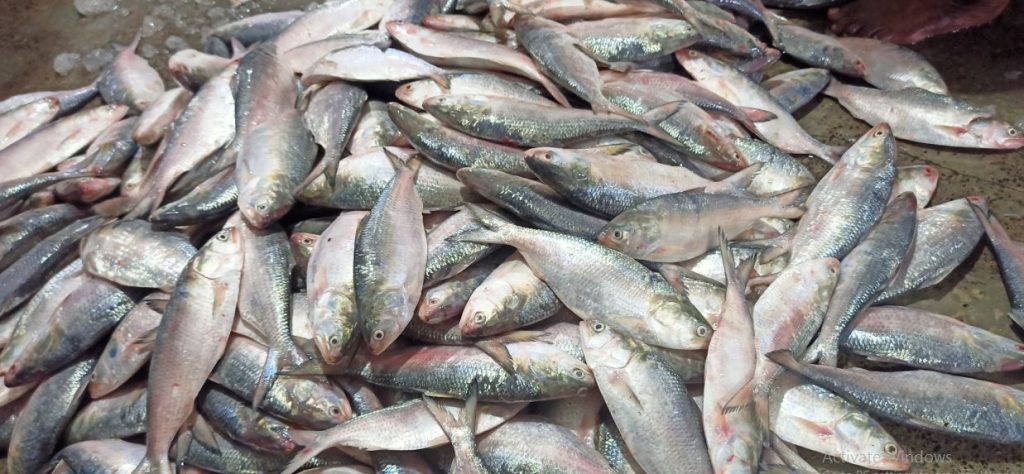Paradip: Hilsa fish, known as the salmon of India, has assumed a pride of place for its unique taste among non-vegetarian food lovers.
However, the prized fish is missing from the platters due to a sharp drop in its catch and consequent skyrocketing prices.
The steep and steady rise in prices can be gauged from the fact that four-five hilsa fish, each weighing around 200-300 gram, were sold at around Rs800 to Rs900 per kg at Baliput fish market in Atharbanki in the port town, Friday. This has left the fisherfolks worried as scanty fish catch has threatened their livelihood.
Similarly, hilsa fish weighing more than a kilogram was sold at `2,000. Such exorbitant prices of hilsa are being witnessed in the Hindu months of Shravana, Bhadraba and Ashwina when the prices usually remain low as fishermen get bountiful catch from the deep sea.
Gone are those days when fishermen used to catch hilsa abundantly from the sea during this time of the year. The bumper catch of hilsa during these months also allowed people to buy the palatable fish at a very cheap price.
With the fishermen facing shortage of ice to preserve the fish, people were able to buy those in pairs striking good bargains. Such scenes were being witnessed before 2012. However, after 2012 hilsa catch has fallen drastically and it was only in 2018 when hilsa was abundant in the market, although only for two days, a fish trader Paresh Mandal said. Since then, it has become a dream to buy hilsa at cheap prices as fish catch is dwindling year after year.
Earlier, we used to catch quintals of Hilsa at this time of the year, but the catch has fallen in the present monsoon, a traditional fisherman Subba Rao said. Nowadays, a gillnet or a trawler manages to catch barely one or two hilsas during a trip, he said.
Hilsas are a sensitive species. They swim away swiftly at the slightest threat. They live in salt water and swim to freshwater through the river mouths and estuarine waters to spawn. Hilsas love swimming upstream during the southwest monsoon when the rivers swell. Later, the hatchlings go back into the sea and repeat the cycle.
However, a number of fishing boats and mechanised trawlers operating along the coast fish in excess of the sustainable limit and overexploit the hilsa population.
Fish catch has dwindled particularly after industrial plants came up in Paradip, fishermen lamented attributing the decline in catch to rampant discharge of untreated effluents into the sea and rivers by the industrial plants.
Now, it has become a dream for a common man to get the delectable fish at a cheap price, they rued.
PNN
